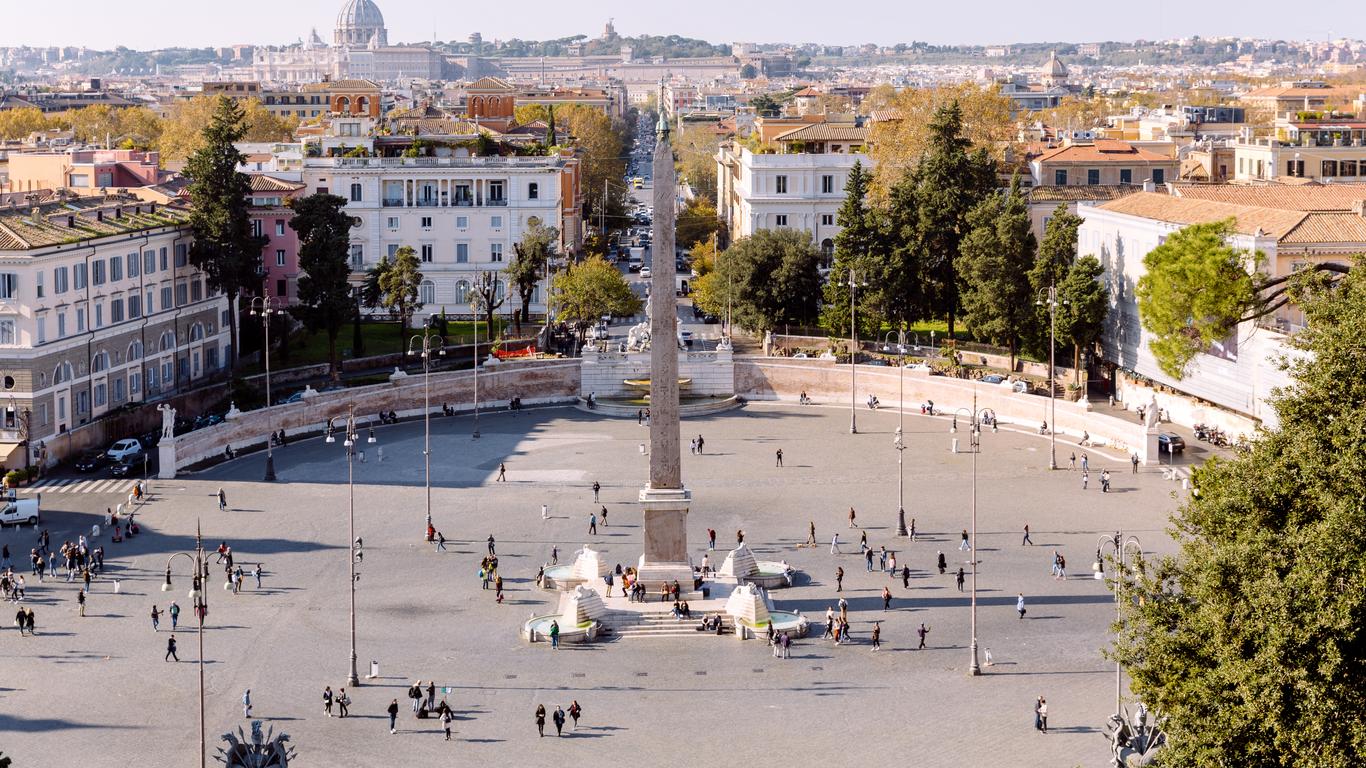Although it translates from Italian as “People’s Square”, this large open piazza in Rome was named after the church of Santa Maria del Popolo in its northeastern corner, which in turn derived its name from the Latin word for “poplars”. It lies just inside the Porta del Popolo of the Aurelian Walls and once served as the starting point of the Via Flaminia, the most important northern route to what is modern-day Rimini.
From its southern approach along the Via del Corso, the Piazza del Popolo is flanked by the twin 17th churches of Carlo Rainaldi, the Chiesa di Santa Maria dei Miracoli and Chiesa di Santa Maria in Montesanto with an Egyptian obelisk of Ramesses II from Heliopolis in the centre. At 36 metres, it stands as Rome’s tallest obelisk, brought to the city in 10BC by order of Augustus and originally featured in the Circus Maximum, before being re-erected here in 1589. The Porta del Popolo on the square’s northern edge was designed by Bernini in the mid-17th century to celebrate Swedish Queen Christina’s conversion to Roman Catholicism. On each side of the piazza stand two fountains by Giovanni Ceccarini, flanked by neoclassical statues of “The Seasons”, while at the centre stands the Fontana dell-Obelisco, a group of four mini fountains which surround the obelisk. When architect Giuseppe Valadier redesigned the square in the early 19th century, he removed a fountain by Giacomo Della Porta to the Piazza Nicosia and demolished some of its buildings to create a shape incorporating two semicircles. Valadier also linked the piazza with the Pincian Hill of ancient Rome on its eastern edge, creating pedestrian steps and a carriage drive up to the Pincio Park lookout, which in turn links to the Villa Borghese gardens.
The Piazza del Popolo is located just a short walk from the Flaminio train, subway and tram stops, which connect to the rest of Rome. The square has recently been designated a pedestrian-only zone and far more pleasant to explore than it was previously.
The Piazza del Popolo was originally planned in 1538 to serve as a grand entrance at Rome’s northern gateway, although its modern design was laid out between 1811 and 1822 by the architect Giuseppe Valadier. For much of its history, it was the stage for public executions in the city, the last of which was conducted in 1826.





